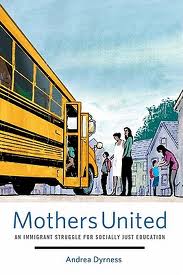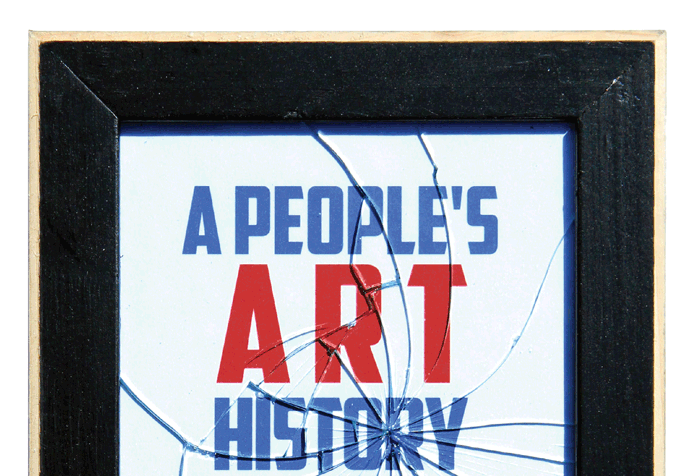 Mothers United:
Mothers United:
An Immigrant Struggle for Socially Just Education
by Andrea Dyrness
University of Minnesota Press, $22.95
Relationships between urban schools and parents have long been troubled by misunderstandings, fear, and racism. Latina/o parents, for example, are made unwelcome in schools that do not make space for Spanish speakers, that hold negative assumptions about parents’ abilities, and that remain alienated from the communities in which they reside. In response, the last 20 years have seen a massive increase in parents and communities of color successfully organizing to reform schools. Many have fought for and won the creation new schools, in order to change these long-standing patterns.
But what happens after the win? Once a new school is founded, how do parents, teachers, and community members negotiate the complicated terrain of designing and running a school? In Mothers United, Andrea Dyrness takes an in-depth look at this process through rich critical ethnography and participatory research with a group of Latina mothers. What she and the “Madres” discover is that the organizing win is only the beginning, and relations of domination and colonialism seep into even the most well-meaning school-community partnerships.
Madres Unidas takes place in Oakland, CA, at a time when years of organizing have led to the founding of a series of “small schools.” Dyrness recounts how she gathered a group of mothers involved in founding one of these small schools, and initiated a participatory research project under the name “Madres Unidas” or “Mothers United.” The book documents the Madres collective as they collect and analyze data about the school, build caring relationships with one another, and use their new understandings to advocate for true parent voice in their school. Dyrness embeds the story in theories of third-world and critical Latina feminisms, allowing her to take a critical look at the power relations in the school design process.
A central argument of the book is that, while both teachers and parents supported the small schools, they came to the work of designing and running a small school with vastly different assumptions and understandings. Parents saw the school as the result of their community activism, and thus as a space where their voice would be recognized. Teachers, long inhibited in their professional work by the bureaucracy of the public schools, thought of the school as a way to realize their professional goal of a more progressive curriculum and pedagogy. Even the term “social justice,” a part of the new school’s mission, meant vastly different things to teachers and parents. While teachers espoused “social justice” in the big-picture sense, parents saw it as a matter of the specific, real-world needs of the community.
Underlying these misaligned viewpoints are fundamental assumptions about the roles parents should play in schools. Using a concept from sociologist Patricia Hill Collins, Dyrness argues that parents were trapped by “controlling images,” or stereotypical representations. For example, in the narrative of the school design and governance, a “good parent” was one that followed the lead of the education professionals, who presumably knew best. Any other behavior — like the demands for more voice from the Madres — was seen as a sign of a “bad parent” or “problem parent.”
This critique extends to the initial community organizing campaign as well. The campaign is portrayed as politically successful and empowering for many parents. Still, Dyrness argues that the campaign fell prey to its own “controlling image,” that of the “angry parent” demanding change. In none of these three roles — good, bad, or angry — are parents seen as experts, people who have vital perspectives and knowledge that are necessary in the creation of a successful community-based school.
In the end, as the Madres discover, this leads to a situation in which the school espouses a commitment to community and parent involvement, but struggles to make this vision a reality. This book suggests that participatory research — in which parents take on the role of researcher/activists — offers a route to critiquing and changing power imbalances between teachers and parents. It also advocates the creation of “counterspaces,” private spaces of trust building and mutual support from which research and activism can sprout — in this case the kitchen of one of the members.
Throughout the book, Dyrness offers a stunning example of what critical ethnography can look like. The descriptions are rich and thick, drawing the reader in and offering ample support for her arguments. It is this depth and detail that makes me believe in her findings, even when it goes against some of my own biases as a supporter of community organizing. In addition Dyrness shows great compassion for the teachers even as she critiques their actions — the villains in the story are not individuals so much as systems of power.
I find that Dyrness draws too stark of a line between organizing and participatory research. This book needs to be understood in the context of the incredibly diverse field of community organizing. While in this particular situation the goals of participatory research butted heads with those of the organizing group, many community organizers have found that participatory research and organizing can go hand in hand. But with that caveat in mind, this book should serve as a cautionary tale to organizers and school reformers that it is not enough to “win” a reform. Close attention to issues of race, class, and power throughout the implementation process is a necessity if collaborative, empowering relationships are to be sustained.


